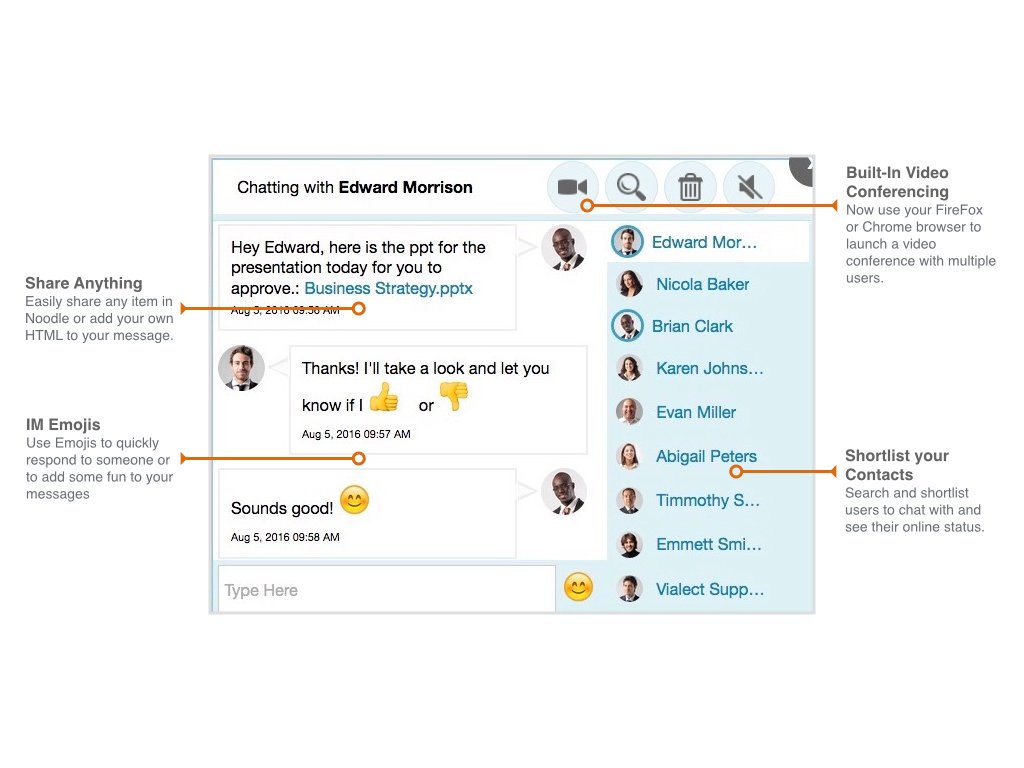How people communicate is always changing. Social media platforms have introduced new ways for people to share, interact and provide commentary. In our last post, we discussed the use of Hashtags (another Social Media staple) for communication in business. Another popular way for people to communicate online is to use “emoticons” otherwise known as, emojis.
Noodle has added several friendly emojis to our Instant Messenger to help you add emotion to your messages and replies with co-workers to help create more of a social feel and allow employees to be more personal with each other when they communicate digitally.
Truth be told that the first emoticon was actually used almost 35 years ago by faculty at the Carnegie Mellon University, during a digital message board post regarding a mercury spill that ended up being fake. Faculty member, Scott E. Fahlman, commented on the situation by proposing the following:
“I propose that [sic] the following character sequence for joke markers:
:- )
Read it sideways. Actually, it is probably more economical to mark things that are NOT jokes, given current trends. For this, use:
:-(“

Now emojis are used all over the web, in our text messages and even in our work e-mail. Opinions on the use in an office are mixed. There is certainly context required and we don’t recommend sending your boss a spiral poo icon. But the same could be said for any form of digital communication.
Will Schwalbe, co-author with David Shipley of the classic email etiquette book Send: Why People Email So Badly and How to Do It Better, explains, “The biggest problem about all electronic communication is that it’s toneless. In the absence of tone, people read negative tone into it.” Using tools like emojis help toneless communication become more friendly and cheerful and as Schwalbe says, “kick it up a notch.”
A Scandinavian study on email in the workplace found exactly that: Emoticons in the workplace were not used to convey emotion, but rather to signal how the information in the email should be interpreted. They found three primary uses: to express positive vibes, to mark jokes, and lastly to either strengthen or soften statements that could be misread as reprimanding. An American study found that on that last point, smiley faces in email can reduce negative interpretations.
Of course there are some pros and cons to using emojis in an office setting. You should never respond to a boss’ request with a pile of poo icon, for example. But smiley faces and thumbs up are generally good positive ways to communicate quickly. If you are making your own list of emojis to use in your office, try to keep it simple. There are also times when emojis would not be appropriate and the context should always be considered before sending one to a co-worker.
Emojis give employees a powerful ability to connect with co-workers and communicate efficiently. They may catch on quicker with a young start up company versus a Fortune 500 corporate firm, but can still be a valuable communication tool. Follow these tips to help you make sure you are using Emojis properly:
- Be conscious of where and when others use emojis
- Emojis may be acceptable for instant messages, but may not be for corporate e-mails
- Know your audience and who you are talking to
- Try not to overuse emojis in a sentence
- Start to use printed emojis in physical places in the office to generate interest such as the lunch menu, or other postings in the cafeteria
- As with any new tool, gather feedback from your users on use and suggestions
